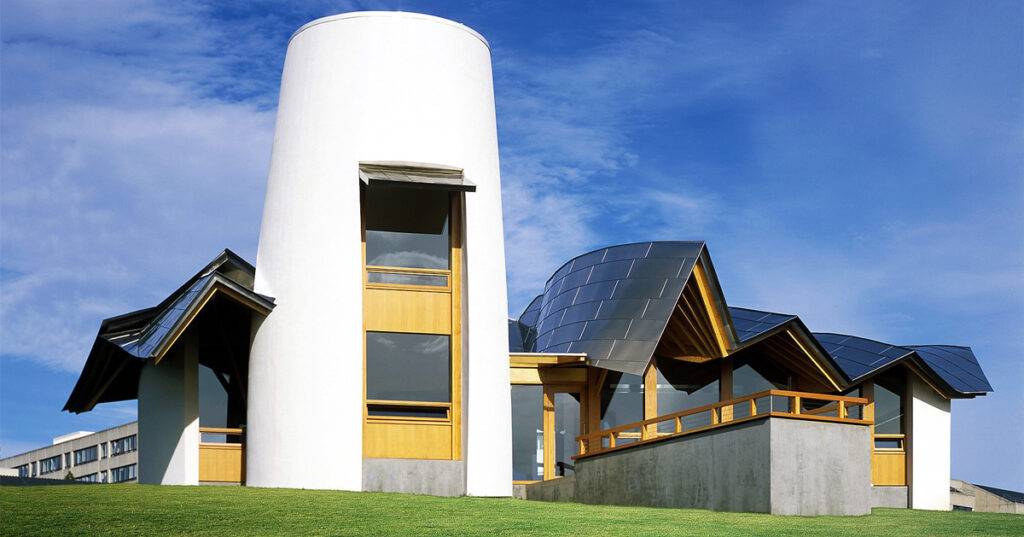StudiO Studies: Maggie’s Centre, Dundee
StudiO Studies is an occasional series highlighting interesting, important and relevant moments from the history of architecture and design. These posts cover everything from theories and concepts to buildings and spaces – and of course, designers.

Completed in 2003, Frank Gehry’s Maggie’s Centre in Dundee is a quietly radical work of architecture. Gehry’s first built project in the UK carries a deep emotional and conceptual weight, despite being modest in scale. A refuge shaped by light, warmth and care, the building sits on the grounds of Ninewells Hospital and stands out from the clinical environments that surround it.
The centre’s most distinctive feature is its sculptural silver roof – inspired, according to Gehry, by the fold of a shawl in a Vermeer painting, as well as by a traditional Scottish “butt n’ ben” dwellings. This metaphor of draping carries through the architecture, softening the forms and suggesting protection. Unlike many of his more flamboyant works, Gehry’s approach here is grounded, offering shelter and closeness rather than monumental gesture.

The building’s plan centres around a communal kitchen and living space. The layout encourages casual, unstructured interaction – a kitchen table instead of a waiting room, a quiet corner instead of a corridor. The materials are simple but expressive: warm timber and white render, plus plenty of natural light. Spiral timber stairs wind up to a small tower-like library space that projects outward like a lighthouse. From this elevated vantage point – a space of contemplation and clarity – visitors can look out over the estuary.
Maggie’s Centre was named for Maggie Keswick Jencks, a writer and designer. After her own cancer diagnosis, she and her husband, architecture critic Charles Jencks, began to envision places where patients could find respite, information and dignity outside of the usual hospital setting. Gehry’s response to this brief (he donated his design services for the project) is restrained and humane, as well as being quietly lyrical. He later stated that he considered the building “as good as anything I’ve done” – quite a claim from the designer of the Guggenheim Bilbao!

The external spaces are integral to the centre’s role as a healing environment. A wooden deck extends from the kitchen, encouraging visitors to step outside and engage with the natural world. A labyrinth of cut grass invites meditative walking. Sculptures by Antony Gormley within the grounds further enrich the experience without dominating it.

Nominated for StudiO Studies by Natasha – who in her Team Talk interview describes her inspiring encounter with an early Maggie’s model – Gehry’s building transcends both style and scale. Through its curving walls and calm palette, it affirms the Maggie’s ethos that design should not intimidate or impose. Proving that architecture can be gentle without being bland, sculptural without being showy, Maggie’s Dundee stands as a testament to the quiet power of considered design.


